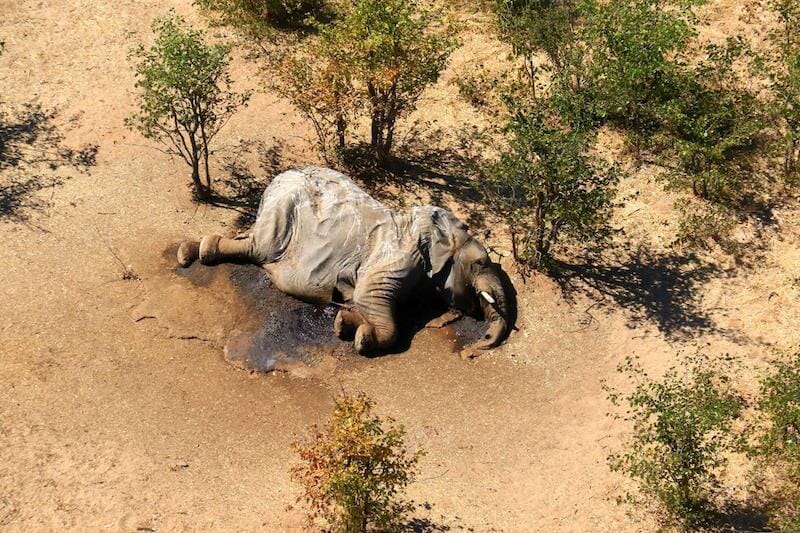One of the stories we’ve been following closely over the past month or so is the continuing mystery surrounding the death of more than 350 elephants in a remote corner of northwest Botswana near the Okavango Delta. The dead creatures were first spotted from the air during an aerial survey of the region back in June, but it took some time to get a research team on the ground to further study what was happening.
Since then, laboratories in Botswana, Zimbabwe, South Africa, the U.K., and the U.S. have been studying samples from the carcasses in an effort to better understand the cause of death. Last last week, officials from the Botswanan government issued a statement indicating that while they still aren’t sure the exact cause of the mass die-off, they have eliminated some possibilities.
We’d previously heard that there were some indications that the elephants died due to “naturally occurring toxins.” While it’s still not clear if that is the case, thanks to the most recent update we do know a bit more about what is happening. In the report released last Friday, the following information was shared:
1. Toxicological analysis of nine pesticides and chemicals commonly implicated in wildlife poisoning have all tested negative.
2. Encephalomyocarditis virus, which is an acute viral disease, also has been eliminated as the cause of deaths.
3. Infectious pathogens have been ruled unlikely.
4. Under-nutrition and starvation have been ruled out as a potential cause.Previously, officials had also ruled out anthrax poisoning and poaching as the cause of death too.
While this does help to narrow down the possibilities, researchers were quick to point out that they have not ruled out poisoning as a potential cause of death. It is possible that either someone deliberately poisoned the elephants, or something that occurs naturally in the wild, had a toxic effect on the creatures.
Many of the dead bodies were found near watering holes, which could indicate cyanobacteria/blue-green algae—which can be lethal—was present in the water. Most feel that isn’t a likely cause however, as those types of algae tend to collect near the shore and elephants usually drink further into the water itself.
Essentially, we’re still working on solving this mystery, but scientists are narrowing things off their list. Thankfully, the deaths of the elephants have seemed to have ceased, as no more bodies have been found since mid-July or so. It is also important to note that Botswana is home to the largest wild elephant population in the world, with more than 130,000 of the creatures wandering within its borders.
The deaths of these 350+ animals doesn’t represent a significant impact on the overall population. Preventing this from happening to other elephant—and possibly spreading further across the country—has been a major concern. So far, there hasn’t been any reason for further alarm.
I’ll keep sharing updates on this story as more news arrives.
- Gear Review: The Xero Scrambler Mid is an Ultralight Hiking Shoe for Spring - March 1, 2023
- Gear Review: Yeti Roadie 48 Wheeled Cooler - August 18, 2022
- Kristin Harila Continues Pursuit of 8000-Meter Speed Record - August 16, 2022

I hope they find an answer, and glad that it doesn’t seem to be spreading. Poisoning by the locals to discourage crop destruction would explain a lot..